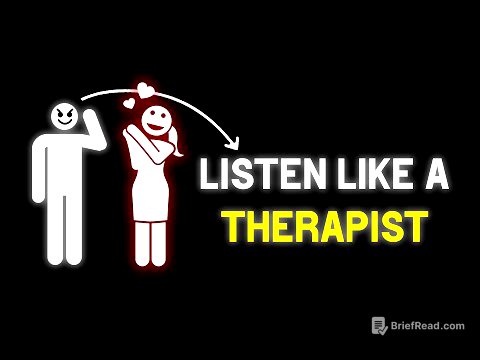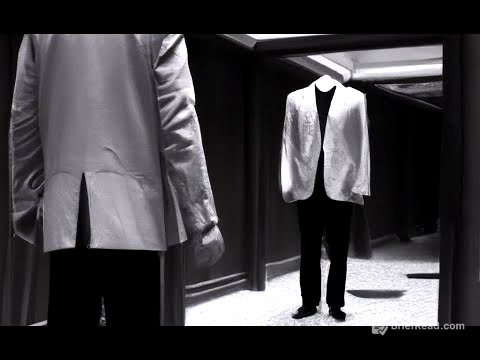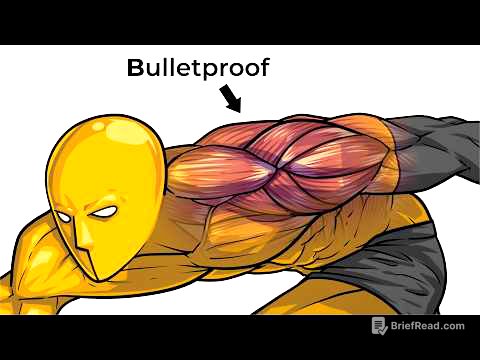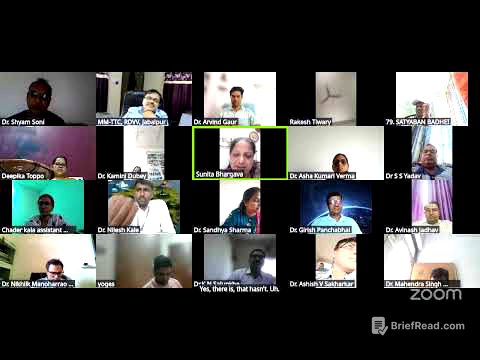TLDR;
This video by Dr. Ebraheim discusses cervical radiculopathy, which is basically irritation of a cervical nerve root. He explains how to differentiate it from other conditions, especially shoulder problems, and how to identify the affected nerve root based on symptoms. He also talks about diagnosis, conservative treatment options, and when surgery becomes necessary. Key takeaways include understanding the C7 nerve root's role (middle finger numbness, triceps weakness), the importance of clinical tests like Spurling's and shoulder abduction, and the fact that most cases improve with non-operative treatment.
Introduction to Cervical Radiculopathy [0:06]
Cervical radiculopathy is basically when a nerve root in your neck gets irritated or compressed. This can cause pain and progressive neurological deficits. Conditions like disc herniations can irritate the nerve roots in the cervical spine. It's important to figure out if the problem is actually coming from the neck and not somewhere else, like the shoulder.
Differentiating Cervical Radiculopathy [0:40]
Shoulder problems and cervical spine issues can sometimes feel the same. If lifting your arm over your head (shoulder abduction) gives you relief, it's more likely a cervical problem. This is because it reduces tension on the nerve roots. Be careful with MRIs, especially if you're over 40, as they can sometimes show problems that aren't really causing your pain. Nerve conduction studies aren't super reliable. EMG and nerve studies can help tell the difference between radiculopathy and a nerve getting trapped somewhere else.
Cervical Nerve Root Levels and Symptoms [1:32]
Disc problems in the neck usually affect the nerve root that's lower in number. For example, a C6-C7 disc herniation will likely affect the C7 nerve root. If you have numbness in your middle finger, think C7. Remember, C7 is the middle finger. C6 affects one way on the fingers, and C8 affects the other way.
C7 Nerve Root Specifics [2:14]
With C7 nerve root involvement, you'll get numbness in the middle finger, weakness in your triceps, and your triceps reflex will be affected. There are 7 vertebrae in the cervical spine, but 8 nerve roots. The cervical nerve roots run horizontally. So, whether the disc herniation is in the center or off to the side, it'll affect the same nerve root. The C7 nerve root runs above the C7 pedicle.
C5-T1 Nerve Root Function [3:22]
For C7, think wrist flexion. The hand looks like a seven when you flex the wrist and extend the fingers. Wrist extension is C6. C5-C6 disc issues are the most common and compress the C6 nerve root. Finger flexion is C8. T1 is like a "black sheep". Shoulder abduction is C5, elbow flexion is C6, and elbow extension is C7 (and triceps reflex).
Dermatomes and Patient Presentation [4:42]
C6 dermatome is present at the lateral side, C7 is the middle finger, and C8 is the first finger. Patients usually have arm pain on one side that gets better when they lift their arm. They'll also have numbness and tingling in specific areas (dermatomes). They might also have pain between their shoulder blades or headaches.
Examination and Diagnostic Tests [5:41]
When you check the patient, do provocative tests like Spurling's test and the shoulder abduction test. Spurling's test involves extending and rotating the neck towards the side that hurts. This narrows the space where the nerve exits and can bring on the symptoms. This test helps differentiate cervical radiculopathy from other nerve problems. The shoulder abduction test (lifting the arm) should relieve the pain if it's a cervical issue.
Important Considerations and Differential Diagnosis [6:30]
Make sure the patient doesn't have a "double crush" – a problem in the neck and another nerve issue somewhere else. Also, rule out myelopathy (spinal cord compression). Check for upper motor neuron signs like gait instability, Hoffman's sign, hyperreflexia, and clonus.
Treatment Options [7:27]
Even if the MRI looks bad, you'll usually start with conservative treatment for about 3 months. This includes therapy and anti-inflammatory meds. About 95% of patients get better without surgery. Cervical radiculopathy is usually treated without surgery, unlike cervical myelopathy.
Surgical Intervention [8:01]
Surgery is considered if the pain is really bad and doesn't improve after 6-12 weeks, or if there's progressive weakness or numbness. The surgery is usually done from the front (anteriorly) to directly remove whatever's pressing on the nerve, like a herniated disc or bone spurs. They might put in a bone graft or spacer to open up the space where the nerve exits, and then add a plate. Some surgeons might prefer to do the surgery from the back (posterior approach).









